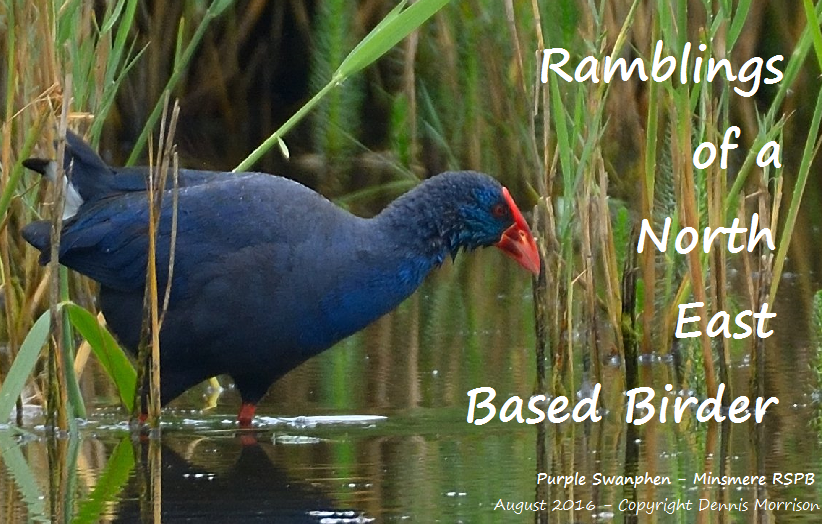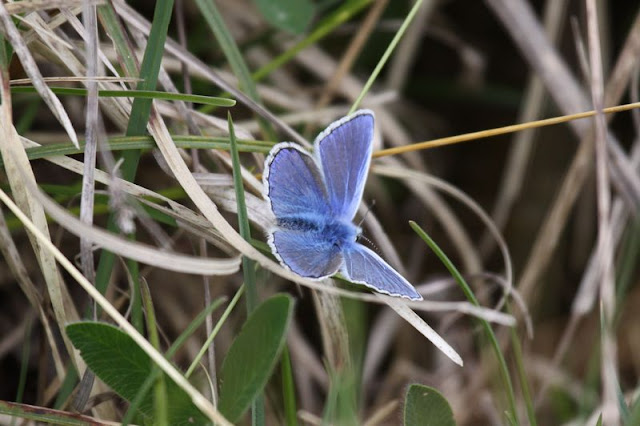I went out with a couple of mates of mine. One of them breeds giant moon moths and therefore has a real passion of these creatures. He was into butterflies and moths before he got into birding, infact he had moths and butterflies to thank for his current interest in birds. My mate said he would help to show me the ropes and kindly gave me a pocket field guide to British butterflies and we went to our first port of call; Bishop Middleham quarry. This site is famous for the Bee Eaters that nested near by some 6 or 7 years ago, I don't like to think about it to much as it pains me. The target species of butterfly was a Dingy Skipper which my mate informs me is quite a localised bird in Durham with not many found elsewhere. Below are some photos of butterflies we managed in Bishop Middleham quarry.
(Common Blue - © Adam Williams)
(Common Blue - © Andrew Kinghorn)
(Wall Brown - © Adam Williams)
(Small Heath - © Andrew Kinghorn)
(Dingy Skipper - © Andrew Kinghorn)
(Durham Brown Argus - © Adam Williams)
Certainly the above butterfly is my favourite. There is a butterfly called the Northern Brown Argus but apparently this species is an isolated population and is treat as a subspecies known as; Durham Brown Argus. Such a beautiful looking butterfly. We left Bishop Middleham quarry fairly happy especially having seen Durham Brown Argus. Our next stop was Bishop Middleham Castle Lake DBC reserve for some birding. We didn't really see anything much of note other than a Yellow Wagtail but we did add the only Green-veined White butterfly of the day.
(Green-veined White - © Adam Williams)
We had some lunch and then all agreed we could have a look down Rainton Meadows to see if anything was about and also we might get the chance to see some butterflies aswell. Turns out there was nothing much at all on the reserve and it was quite for birds so we turned our attention to butterflies again.
(Small White - © Adam Williams)
(Large Skipper- © Adam Williams)
(Small Copper - © Adam Williams)
(Small Copper - © Andrew Kinghorn)
The Small Copper looked very fresh, my mate reckoned it must have just come out. We also had a Large White fly past us but it was to quick for a photograph. Superb day getting acquainted with butterflies. I can tell myself and butterflies are going to get on quite well.
Off to Norfolk for a long weekend, will hear all about it when I am back.
Until next time, Foghorn out!























